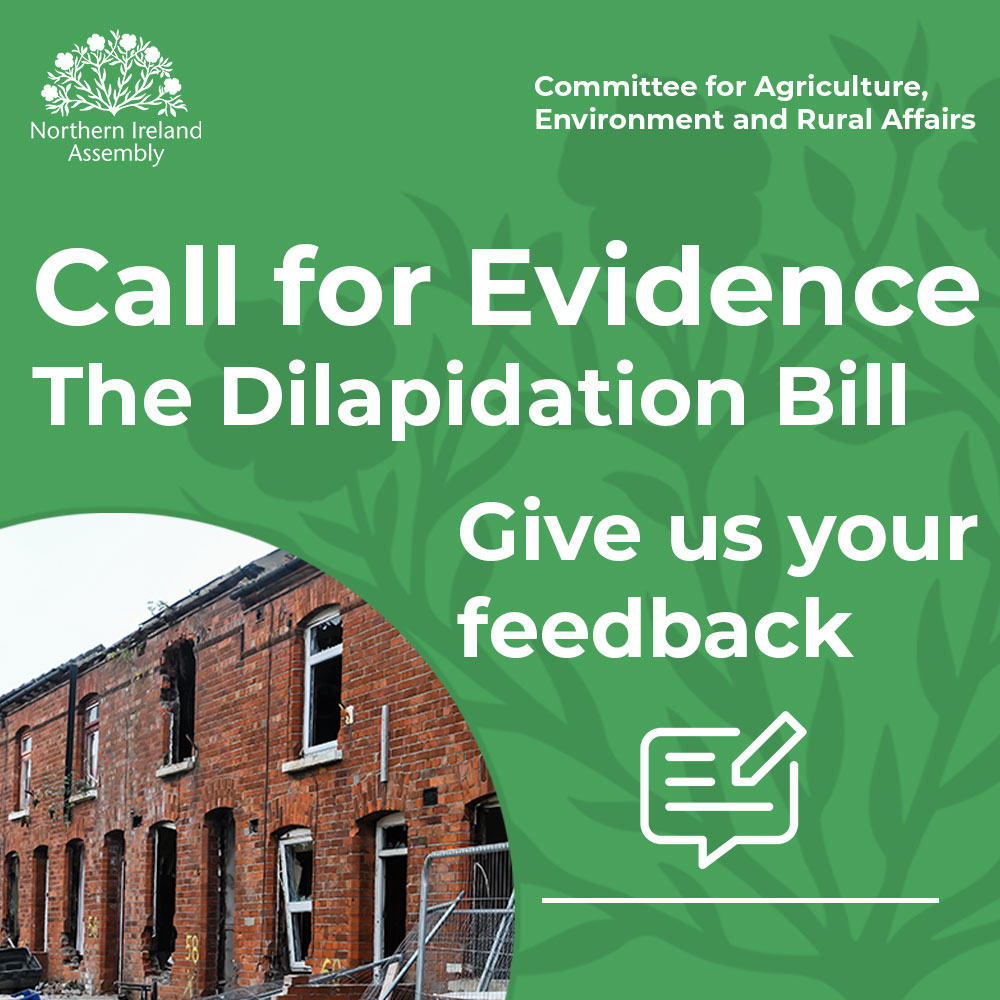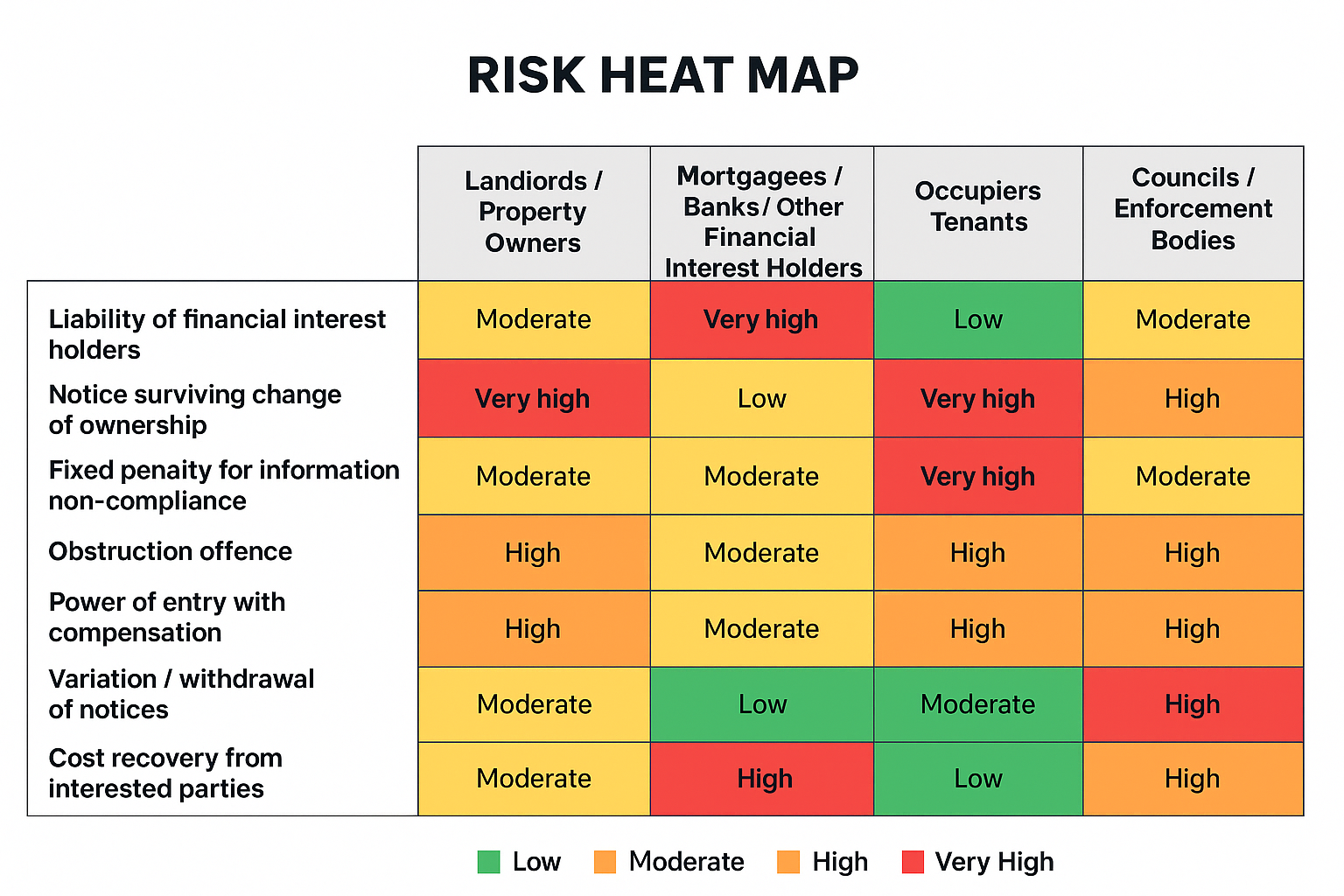- BY Kevin Barry BSc(Hons) MRICS
- POSTED IN Latest News
- WITH 0 COMMENTS
- PERMALINK
- STANDARD POST TYPE


Contained below is a summary of the main law reform currently being advanced by the Northern Ireland Executive (and Assembly) around Dilapidations / derelict / neglected sites & buildings.
Key Reform: The Dilapidation Bill
The principal legislative development is the Dilapidation Bill, which has been approved by the NI Executive (5 June 2025) and is now progressing through the Assembly.
Below are the main features, objectives, and issues of that Bill (as introduced) and the surrounding legal context:
Objectives & Rationale
- The Bill aims to provide a modern, consistent, Northern Ireland–wide enforcement regime for dealing with dilapidated, dangerous buildings and neglected sites.
- It seeks to give district councils a clearer “toolkit” of powers (notices, entry, enforcement) analogous to what exists in England & Wales, and to strengthen cost-recovery mechanisms so that councils can more viably carry out works.
- It proposes to consolidate or supersede certain older statutory provisions (e.g. under the Pollution Control & Local Government (NI) Order 1978) and local “local acts” that address dereliction or ruinous buildings.
- The Bill also embeds a hierarchy of notice types (maintenance notices, dilapidation notices, dangerous structure notices, immediate action) depending on severity.
- It provides for appeals, offences and penalties, powers of entry, requirements for information from owners/occupiers, and binding obligations for those with financial or other interests in property (e.g. mortgagees).
- The Bill also intends to include protections for heritage or listed buildings (e.g. consultation with planning / heritage bodies) so that heritage interests are taken into account.
Key Provisions in the Bill (as introduced)
Some of the clauses / features to note:
| Provision | Summary |
|---|---|
| Clause 12 / “Costs of interested person” | Where costs are demanded, persons receiving rent on behalf of another may not be pursued if they are unlikely to be responsible. |
| Clause 15 (Obstruction by occupier etc.) | Courts may issue orders if an occupier obstructs work. Also an associated offence / penalty. |
| Clause 16 (Information powers) | Councils may require information about ownership, interests, use, etc. Offences for failure to provide information. |
| Clause 17 (Consultation on heritage sites) | When dealing with heritage or historic sites, councils must consult the Department / relevant planning department. |
| Clause 18 (Powers of entry) | Provides for entry to land by authorised officers (with notice periods) and includes compensation & offences for obstruction. |
| Clause 19 (Fixed penalties) | Councils may issue a £500 (discretionary) fixed penalty for breaches of maintenance notices or failure to provide information (subject to regulations). |
| Clause 20 (Guidance) | District councils must have regard to statutory guidance issued by the Department; draft guidance to be laid before Assembly. |
| Clause 21 (Notices: variation, withdrawal) | Powers around varying or withdrawing notices. |
| Clause 22 (Appeals) | An appeal suspends the notice (except in certain works under sections 10 or 11). Courts direct how to give effect to decisions; further appeals possible to County Court. |
| Clause 23 (Offences: defendant ceasing to own / occupy) | Provisions when a defendant ceases to have interest during notice period. |
| Clause 26 (Repeals / consequential amendments) | Repeals certain existing legislation (Schedule 2) and allows regulation-making for consequential amendments. |
Also, Schedule 1 deals with the details of fixed penalty notices; Schedule 2 lists the legislation to be repealed.
Interaction with Existing NI Legislation
- Under current NI law, councils already have powers under Part 7 of the Clean Neighbourhoods & Environment Act (NI) 2011 to inspect suspected statutory nuisances and serve abatement or remedial notices.
- Also, Article 65 and Article 66 of the Pollution Control & Local Government (NI) Order 1978 permit action in limited circumstances (e.g. ruinous or dilapidated buildings “seriously detrimental to the amenities of a neighbourhood”).
- However, those regimes are seen as narrow, old, inconsistent across districts, and poorly suited to tackling modern problems of building neglect, safety risks, visual blight, etc.
- The Bill intends to consolidate, modernise, and in many cases replace or enhance those older powers.
Status, Timeline & Consultation
- The Bill passed the “Second Stage” in the Assembly on 1 July 2025 and now moves to Committee stage for more detailed scrutiny.
- A public consultation / stakeholder feedback phase is open (or was scheduled) via the NI Assembly Citizen Space portal, seeking views on the objectives, proposals, and impacts.
- The Committee for Agriculture, Environment and Rural Affairs (AERA) is the designated committee for scrutinising the Bill.
- The Bill is expected to be refined via amendments, and its final shape may differ from the version introduced.
Current Debated Issues / Points of Note
- The balance between giving councils enforcement powers and safeguarding property-owner rights (including due process, appeals) is under scrutiny.
- The scope of works that can be required (from tidying, repairs, to demolition) is broad and may be contested in terms of proportionality.
- The ability to recover costs, particularly from financial interest holders (e.g. mortgagees) is an important change, but may face resistance.
- Treatment of heritage / listed buildings — ensuring that the regime does not unduly endanger heritage — is built into the Bill, but the details will be important.
- The level of penalties (criminal, fixed penalty) and effective enforcement resourcing (i.e. whether councils will have capacity) are practical concerns.
- The Bill does not impose new duties on councils to act; rather it gives them optional discretionary powers.
- There is no discrete funding in the Bill to back the new powers; the cost recovery provisions are integral to making it viable.
In short: the principal dilapidations law reform under active consideration is the Dilapidation Bill, which would greatly expand and modernise the statutory powers of district councils in Northern Ireland to tackle neglected, dilapidated, or dangerous buildings and land, improve cost recovery mechanisms, introduce more tailored notice regimes, and update or replace older legislation.
Here’s a list of 10 unusual but relevant powers proposed under the Northern Ireland Dilapidation Bill that go beyond traditional “repair or demolition” notices, showing how it’s a step-change in tackling dereliction:
| # | Power | Description / Why unusual |
|---|---|---|
| 1 | Fixed penalty for information non-compliance | Councils can issue a £500 fixed penalty if owners fail to provide information about their property or interests—rarely seen in traditional dilapidations law. |
| 2 | Power to compel information from financial interest holders | Banks, mortgagees, or other stakeholders must disclose interests in the property; shifts liability awareness upstream, not just to owners. |
| 3 | Hierarchy of notices | Different levels: maintenance, dilapidation, dangerous, immediate action—allows councils to tailor interventions rather than one-size-fits-all. |
| 4 | Notice survives change of ownership | If a property is sold while a notice is active, obligations can still transfer or remain enforceable—a legal novelty in NI dilapidation law. |
| 5 | Variation / withdrawal powers for notices | Councils can adjust or withdraw notices after issue, giving flexibility to respond to changing circumstances. |
| 6 | Mandatory consultation on heritage / listed buildings | Requires councils to liaise with heritage bodies before enforcing works—protects historic assets but unusual in enforcement statutes. |
| 7 | Power of entry with compensation | Authorised officers can enter land to assess or carry out works, with statutory compensation for owners—formalises what was often an informal or disputed power. |
| 8 | Obstruction offence | Occupiers who obstruct council works can be criminally liable—a deterrent rarely codified in older NI law. |
| 9 | Ability to charge interested parties for works | Not just owners—anyone with a legal or financial interest in the property may be liable for council remediation costs. |
| 10 | Guidance compliance obligation | Councils must have regard to statutory guidance, effectively standardising enforcement practice across all districts—rare for older, piecemeal dilapidation legislation. |
These powers collectively shift the regime from reactive to proactive, give councils more enforcement teeth, and expand the liability net beyond traditional owners—making it unusual compared to older NI legislation or even comparable English powers.
Here’s a Top 5 of the most controversial or likely challenged powers in the NI Dilapidation Bill, along with why they might face legal or political pushback:
| # | Power | Reason it may be controversial |
|---|---|---|
| 1 | Liability of financial interest holders (e.g., mortgagees, banks) | Extending cost liability beyond owners is novel; banks may resist paying for works on properties they don’t occupy. Legal challenges could arise over the scope of “interested person.” |
| 2 | Notice surviving change of ownership | Obligations transferring to a new owner can create uncertainty in property transactions and may lead to disputes or litigation. Conveyancers may see this as a commercial risk. |
| 3 | Fixed penalty for failure to provide information | Criminalising non-cooperation—even for innocuous omissions—may be seen as heavy-handed; potential challenge on proportionality or due process grounds. |
| 4 | Obstruction offence | Making it a criminal offence to impede council works can be contentious, especially if councils enter or act in ways owners consider excessive. Courts may be asked to define “obstruction” narrowly. |
| 5 | Power of entry with compensation | Councils can enter privately-owned land to assess or carry out works, but compensation may not fully cover owner losses. Potential legal disputes over adequacy or scope of entry rights. |
These powers are likely to generate debate because they broaden the enforcement reach, introduce financial or criminal consequences, and create obligations affecting third parties—not just the direct property owner.
Below a visual “heat map” diagram showing which powers are high-risk vs low-risk for each stakeholder—this is often easier for boards, legal teams, or councils to digest.

